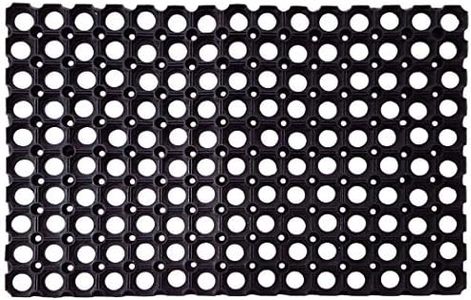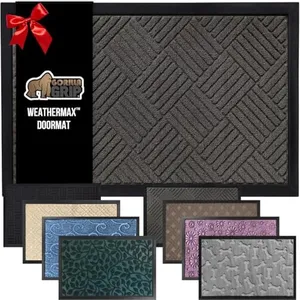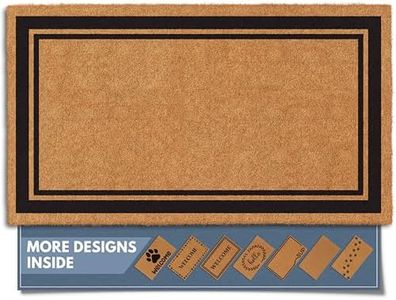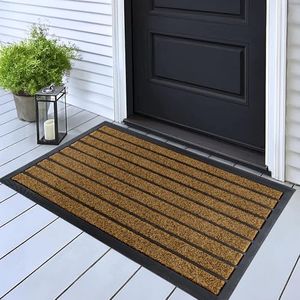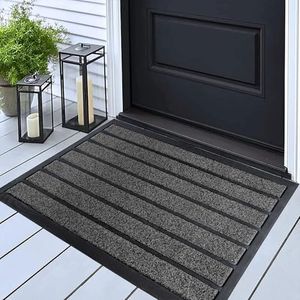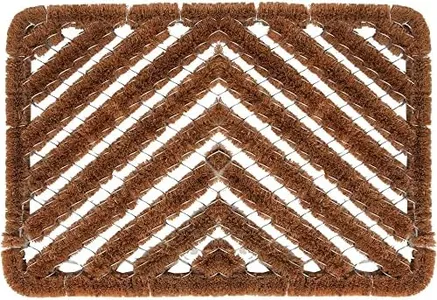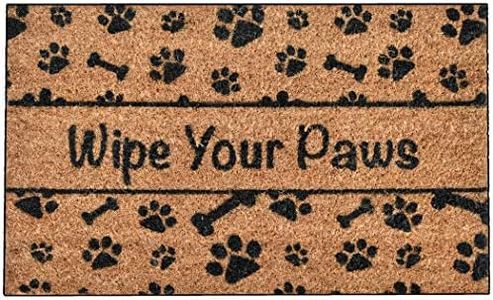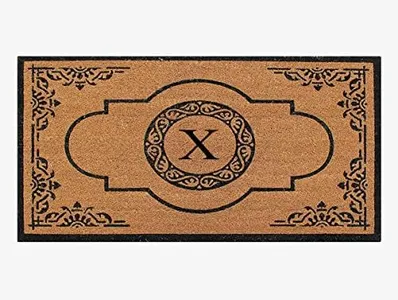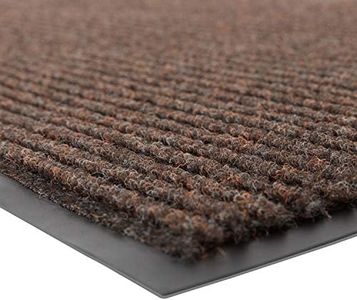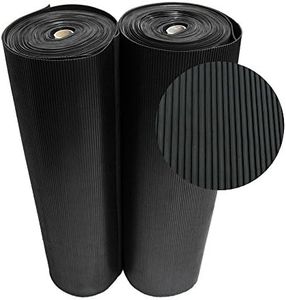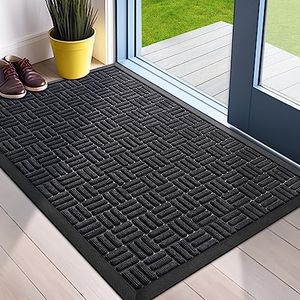10 Best Outdoor Mats 2025 in the United States
Our technology thoroughly searches through the online shopping world, reviewing hundreds of sites. We then process and analyze this information, updating in real-time to bring you the latest top-rated products. This way, you always get the best and most current options available.

Our Top Picks
Winner
GORILLA GRIP 100% Waterproof All-Season WeatherMax Doormat US Designed Natural Rubber, Stain Fade Resistant, Low Profile Indoor Outdoor Door Mats, Easy Clean, 17x29 Gray Diamond
Most important from
37623 reviews
The Gorilla Grip WeatherMax doormat is a well-designed outdoor mat that combines durability with practicality. It’s made from polypropylene with a natural rubber backing, which makes it waterproof and resistant to fading, stains, and harsh weather — great for handling rain, snow, mud, and sand. Its size (17 by 29 inches) and thickness (0.3 inches) are ideal for most doorways, and the low profile lets doors open smoothly over it. The deep grooves and diamond pattern not only look nice in a neutral gray but also do a solid job trapping dirt and moisture, helping keep your floors cleaner.
The rubber backing adds strength and prevents the mat from slipping, which is important for safety in high traffic areas. Cleaning is straightforward as it’s washable by hand and dries quickly. Because it’s relatively thin, it might feel a bit firm underfoot compared to thicker mats designed for more cushioning. Also, hand washing might be less convenient than mats you can machine wash. The mat is versatile enough for both indoor and outdoor use, fitting well in entryways, porches, or patios.
For those seeking a tough, weather-resistant mat that balances function with a simple style, this product is a strong choice.
Most important from
37623 reviews
Barnyard Designs Natural Coco Coir Heavy Duty Backing Doormat - Large Cute Non-Slip Front Door Welcome Mat for Outside Entrance or Porch Entry, Brown (17x30, Border)
Most important from
1081 reviews
The Barnyard Designs Natural Coco Coir Doormat is made from 100% natural coconut coir, known for its toughness and durability, making it effective at scraping dirt and mud off shoes before entering your home. Measuring 30 by 17 inches, it fits most doorways comfortably and provides enough space for two people to stand side by side if needed. The mat is about half an inch thick, offering a low-profile design that won’t obstruct doors but still feels sturdy underfoot.
Its backing is made of polyvinyl chloride (PVC), providing a non-slip surface that helps keep the mat in place, reducing the chance of slipping or shifting, which is especially useful for busy households or where pets run around. The design features a classic, simple rectangular brown border that adds a neat and welcoming look without being too flashy. Cleaning is straightforward with spot cleaning recommended; however, coir mats can shed fibers initially and may release some natural color when wet. Using a protective underlayer and placing the mat in a covered area like a porch will help prolong its life and avoid staining.
This mat works well for outdoor or covered entryways, patios, and porches, offering a sturdy and attractive solution for keeping dirt outside. It is not stain-resistant and requires some care to maintain, so if ease of cleaning is a top priority, other materials might be easier to handle. This product is a solid choice for those looking for a natural, durable, and visually simple doormat that effectively traps dirt and stays securely in place.
Most important from
1081 reviews
ubdyo Extra Durable Door Mat - Dirt Trapping Outdoor Welcome Mats - Non-Slip Outdoor Indoor Entrance - Low Profile Front Doormat (32" x 20", Bright Brown)
Most important from
8043 reviews
The ubdyo Extra Durable Door Mat is a solid choice for an outdoor mat that balances durability and style. Made from polypropylene with a combination of artificial grass and rubber strips, it does a good job trapping dirt and mud, which is essential for keeping your entrance clean. At 32 by 20 inches and 0.4 inches thick, it’s a medium-sized mat with a low profile that won’t get caught under doors, fitting well on patios or verandas.
One of its key strengths is the PVC rubber backing, which helps prevent slipping and keeps water contained during rain or snow, enhancing safety and durability. This mat is also lightweight (around 1.7 pounds), making it easy to handle. The bright brown color with a modern striped pattern adds a welcoming touch without being overly flashy.
Cleaning is straightforward: you can hose it down or shake it out to remove debris, and vacuum it if used indoors. The mat is also stain-resistant and water-repellent, which helps keep it looking fresh longer. However, the care instructions suggest hand washing for deeper cleaning, which might feel like extra effort for some users. It suits both indoor and outdoor use, although those needing a larger mat or something thicker for heavy-duty mud might look elsewhere. The synthetic material may not appeal to those preferring natural fibers. This mat offers a practical, stylish, and easy-to-maintain dirt-trapping solution ideal for homeowners wanting a dependable entrance mat.
Most important from
8043 reviews
Buying Guide for the Best Outdoor Mats
Choosing the right outdoor mat can significantly enhance the cleanliness and safety of your home or business entrance. Outdoor mats are designed to withstand the elements and provide a welcoming entryway while trapping dirt and moisture. When selecting an outdoor mat, consider the specific needs of your environment and the amount of foot traffic the mat will endure. Here are some key specifications to help you make an informed decision.FAQ
Most Popular Categories Right Now
